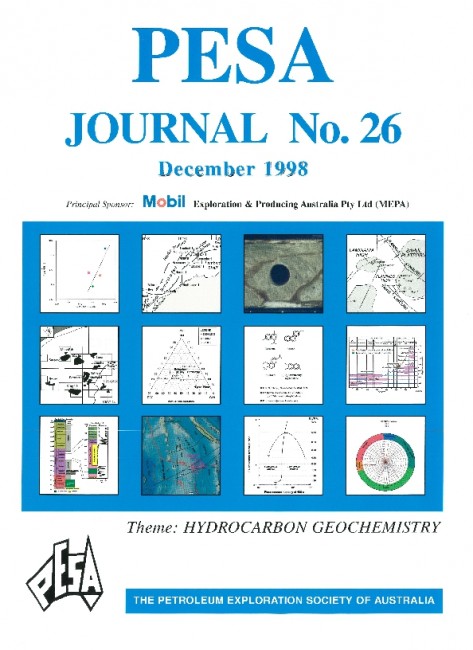Publication Name: PESA Journal No. 26
Authors: Gwenda A. Hart and Steven J. Fisher
Publication Volume: 26
Date Published: December 1998
Number of Pages: 13
Reference Type: Journal Article
Abstract:
The use of synthetic fluids in oil-based drilling muds iscommon in modern day drilling. Consequently, it is
possible that geochemical data obtained from the analysis of
cuttings, cores, sidewall cores and crude oils may be
affected by contamination from organic components of
drilling mud, and in particular from synthetic base fluids.
In this study, the chemical composition of NovaPlus (a base
fluid comprising a mixture of olefins) and the composition
of a crude oil contaminated with this fluid, were determined
using liquid chromatography, gas chromatography and
quantitative gas chromatography - mass spectrometry.
The results of these analyses indicate NovaPlus contains a
high proportion of branched and cyclic (non-linear) and
straight chain (linear) alkenes, a minor proportion of linear
and non-linear alkanes, and a negligible amount of aromatic
hydrocarbons.
Alkenes occurred in the fraction contammg saturated
hydrocarbons isolated from the oil contaminated with
NovaPlus. This fraction therefore required an additional
liquid chromatographic separation of the alkenes from the
alkanes. The linear and non-linear alkanes and aromatic
hydrocarbons originating from the NovaPlus remained
mixed with the indigenous hydrocarbons in the saturated
hydrocarbon fraction (with alkenes removed) and the
aromatic fraction, respectively.
Concentrations of the branched and cyclic saturated
hydrocarbons and aromatic hydrocarbons which are present
in the NovaPlus, and which are commonly used to
determine 'biomarker' ratios, were at or below the limit of
detection and had little impact on interpretation of the data.
Moreover, it is possible to determine (a) the proportion of
the NovaPlus component in a contaminated oil, and (b) the
concentration of selected individual branched and cyclic
saturated hydrocarbons and aromatic hydrocarbons (used in
geochemical interpretations) in the indigenous component
of a contaminated crude oil.


